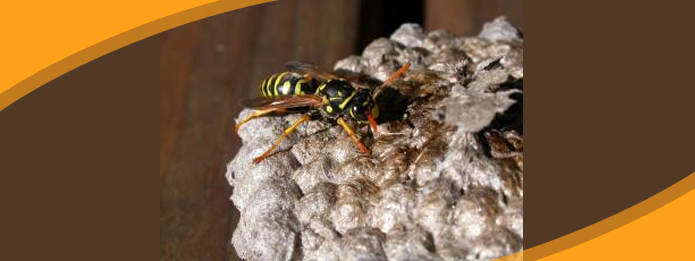Waterloo Pest Control: What are Killer Hornets?

While Canada has its fair share of wasp and hornet species that are active during warmer weather, you may be concerned about the news of giant Asian hornets that have made their way into the area. Several nests were reported in and around Canada in 2019, and we at Truly Nolen Canada are here to provide you with information about these insects, as well as a wide variety of pest control in Waterloo.
The Hornet’s Origin
As its name suggests, the giant Asian hornet hails from different parts of the Asian continent, particularly in South and East Asia where the tropical weather suits their habits. This species avoids high altitudes and can be found in forests and foothills of their native Asia where they occupy rotted tree trunks or dig out nests in soft ground. This behaviour differs from wasp species, which usually build their nests above ground. The hornets prey on other insects and on honey, which they consume after destroying the nests of any bees they can find.
The giant Asian hornet is larger than most other species, and some can reach nearly three inches in length. Their wingspan and stinger are also longer, and because of their threatening appearance, you may be frightened of the thought of them invading your neighbourhood.
Interactions With People
The media has made much of a North American invasion of these “murder” hornets, which may have you stocking up on bug spray. However, despite the nickname given to these insects, they rarely interact with humans. They are industrious and non-aggressive, attacking only when they feel their territory is being threatened. On average, you are more likely to be swarmed by wasps or honeybees than you are giant Asian hornets.
Since sightings of the giant Asian hornet have been minimal so far, you are not likely to encounter a nest. However, if you do find a hornet’s nest on your property and are unsure of what species might occupy it, call us for pest control in Waterloo so it can be removed safely. Avoid approaching any nests on your own since some wasps are aggressive and can sting you repeatedly.
A Possible Threat to Honeybees
While the giant Asian hornet may pose little threat to people, they do prey on honeybees to consume the honey and feed bee larvae to their own young. These hornets can lay waste to a honeybee hive in less than one day, and some people believe that if these hornets spread across North America, the honey supply could be seriously affected.
The European honeybee is a favourite food of the giant Asian hornet; however, because of the varying climates and terrains of the North American continent, it is unlikely that colonies of these insects will start to spread and cause the widespread death of honeybee hives. Many areas of the U.S. and Canada, in particular, have harsh winters that would kill the hornets off, and because of their larger size, giant hornets do not migrate long distances. These factors likely mean that the overall threat to man-made honeybee hives and the commercial supply is not in great danger.
The Future of the Hornet in North America
Some entomologists believe the giant Asian hornet is unlikely to become a serious threat in the coming months and years because of their inability to withstand varying temperatures and their limited adaptability to human environments. The sightings of individual hornets in the United States and one nest in Canada does not offer much evidence of a mass invasion, so you likely have little to fear.
While giant Asian hornets are unlikely to invade your property, other stinging insects, such as bees and wasps, may present a problem for you and your family. Give us a call today for more information about how we can remove nests and hives safely.